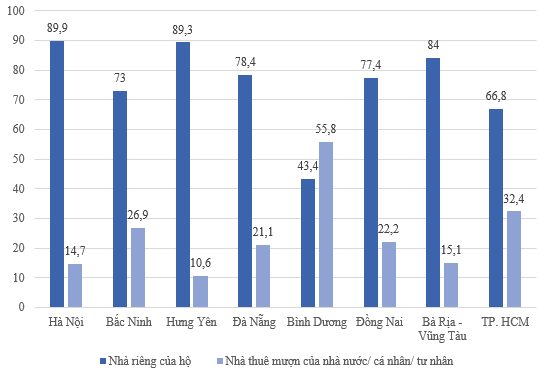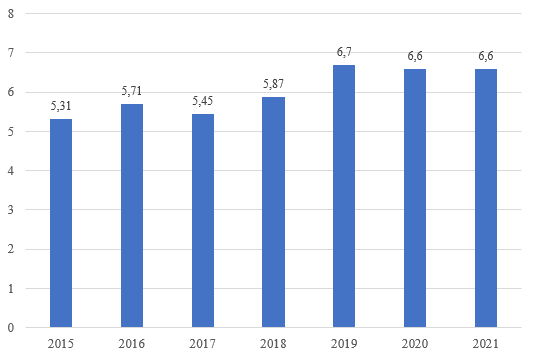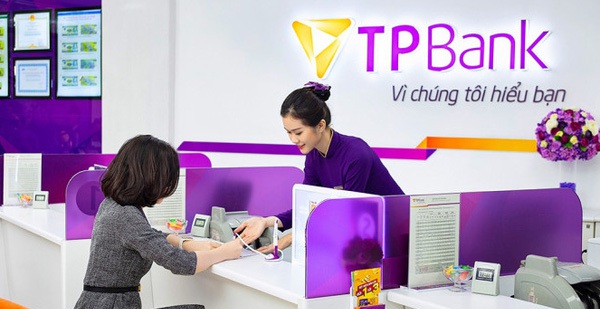Behind the figure for every 100,000 households, there are 5 households without a house
The reality of Vietnam’s housing access compared to other economies in the region
The situation of homeless households in Vietnam is gradually improving in 10 years, from 0.98 households/10,000 households in 2009 to now 0.5 households/10,000 households. In Vietnam, the percentage of households with houses reaches 99.5%, semi-permanent and permanent houses (accounting for 99.3%) and the average housing area per capita in 2019 is 19.4 m2/person.
In fact, the problem of housing for middle-income workers is not only a problem in Vietnam, but also exists in many countries. As in Indonesiain 2020, up to 3 million people are homeless and up to 25 million people live in slums and makeshift houses.
Indonesian Minister of Public Works and Housing Basuki Hadimuljono said that the ministry aims to support and subsidize 21.69 trillion rupiah (equivalent to 1.55 billion USD) from the state budget for construction. nearly 400,000 new houses. This effort aims to meet housing needs, especially for low-income people.
In SingaporeCurrently, the Housing Development Authority (HDB) is providing about 1 million apartments, most of which are concentrated in more than 20 scattered new towns. On average, each apartment costs about 217,000 USD. According to SingStat data, the average income of a household in Singapore will be about 9,250 USD in 2021. Thus, it only takes about 2-3 years for Singaporeans to own an apartment.
The money that people use to buy HDB apartments is provided in part by the Central Fares Fund (CPF), a mandatory national savings program. Accordingly, each Singaporean of working age must set aside 20% of his monthly salary (the employer pays an additional 17%) to save.
They have the right to withdraw part of this savings as a deposit for HDB apartments. Many are also granted cheap mortgage loans and use CPF savings to pay monthly interest. Therefore, the home ownership rate in Singapore is now up to 91%, making it one of the countries with the highest rate in the world.
In KoreaMinister of Land, Transport and Infrastructure Noh Hyeong-ouk also said that the Government of this country will implement a plan to build more than 2 million social housing units across the country by 2030, including more than 1 million units in Seoul capital.
According to statistics from Kookmin Bank, the average apartment price in Seoul increased by 90% from the time President Moon Jae-in took office in May 2017 to 2021. The average apartment price in the Korean capital reached peak of 1.1 billion won ($953,000). This is equivalent to 17 years of median household income in Seoul, more than double the 2012 rate.
Across Korea, the average apartment price increased by 60% in the five-year period, from 2016 to 2021.
In Hong Kong (China), the home ownership rate in 2020 will be about 50%. According to data from the Evaluation and Appraisal Department, in June 2021, a 46 square meter apartment costs about $1.12 million in Hong Kong Island, $1.07 million in Kowloon and nearly $900,000 in the area. New World.
According to Demographia’s annual International Housing Affordability Study 2021, it will take a family in Hong Kong (China) nearly 21 years to buy a home if they’re frugal.
Average income can’t keep up with real estate price growth
According to the results of the 2019 Population and Housing Census, Vietnam has about 26 million households, of which about 1,244 are homeless. Thus, on average, for every 100,000 households, there are about 5 households without a house.
One of the reasons for the housing shortage could be that the average property price growth rate is currently much higher than the average wage growth. According to a report of the Vietnam Real Estate Brokers Association, from 2014 to now, real estate prices have continuously increased, with an average annual increase of over 10% per year.

Percentage of households owning houses in some provinces in 2019. Unit: % (Source: GSO)
Batdongsan.com.vn’s online data also shows that the average real estate price growth rate in 2018 – 2019 is 12 – 20%. In the third quarter of 2019, Ho Chi Minh City apartments increased by 11.8%, much higher than the average salary increase in 2019 of 3% (Navigos data).
Meanwhile, according to data from the General Statistics Office, in 2016, the average salary was 5.71 million VND/month, an increase of 7.5% compared to 2015. By 2019, the average income of employees salaried workers is 6.7 million VND, an increase of 17% compared to 2016. However, by 2021, the average income of salaried workers is 6.6 million VND/month, down 45,000 VND compared to 2016. with 2020.

Average income of salaried workers from 2015 to 2021. Unit: million VND (Source: GSO)
For example, a young family with two people, current average income, total 13.2 million/month, if you want to buy a 70 m2 apartment in Hanoi, let’s say the cheapest one is now 20 million/m2. , it needs at least 1.5 billion VND. Thus, this price is equivalent to about 9 years of the average income of a household mentioned above.
However, this calculation does not take into account whether house prices have increased over the years, or income levels have increased. However, with the trend of house prices increasing many times faster than income growth, it can take longer for the average wage worker to own a home.
at Blogtuan.info – Source: cafebiz.vn – Read the original article here



